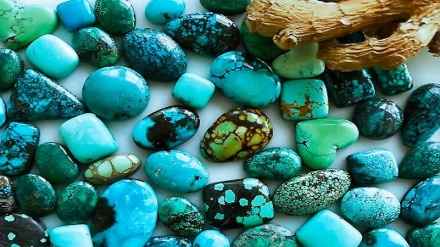Iranian Market (45)
Welcome to this week’s episode of the Iranian Market. The Islamic Republic of Iran possesses about four thousand hectares of land under cultivation of horticultural flowers and plants. This figure includes nearly 1% of global market’s share. Stay tuned for more.
One of the lucrative trades in the world is the business of horticultural flowers and plants. The global turnover of this industry in recent decades has inclined toward growth and development. According to the statistics of International Association of Horticultural Producers (AIPH) in 1950s, the trade value of horticultural products in global markets was about three billion dollars. This figure amounted to 100 billion dollars in 2010. It is said that currently the turnover of buying and selling horticultural flowers and plants is more than 150 billion dollars in the world.
Because of the vast financial profits, scores of countries around the world are engaged in producing horticultural products in trade scale.
The history of growing flowers as a high- income industry dates back to the 18th century. In those years, different European countries like England collected different species of plants from around the world and established botanical gardens and green houses in order to preserve those species. By providing access to visiting these places as well as public welcome, growing ornamental flowers and plants changed into a commercial industry in a way that we can see today.
In the Islamic Republic of Iran, the history of planting and growing horticultural flowers and plants dates back to ancient times. Ancient Iranians used to apply certain methods for designing greeneries.
It’s interesting to note that people of ancient Iran considered lotus as a sacred flower. This is evident on the carved stones of Persepolis in the city of Shiraz. Also the carvings of lotus can be seen on the remnants of Apadana Palace in the city of Shush.
The reputation of beautiful Iranian gardens in different eras alongside the art of designing is obvious in the beauty of flowers and plants used in them.
The flower designs have not only been evident in Iranian architecture, the role of flower has also been boldly present in beautiful Iranian hand-woven carpets and handicrafts.
Flowers and plants have been the source of inspiration for many Iranian poets. Iranian poets, by using the names of some flowers like jasmine, tulip, rose, poppy flower or daffodil, have tried to imply different definitions of chastity, innocence, dedication, love and martyrdom.
Eram Garden located in Shiraz is among the most beautiful Iranian gardens. It is such a unique and gorgeous garden that has enriched the UNESCO World Heritage Site by adding it to their list. Eram garden has a splendid atmosphere surrounded by tall cypress trees, fragrant flowers, and aromatic sour orange trees. Moreover, the sound of birds singing in the green space of the garden brings peace and serenity to visitors and tourists. In spring, Eram Garden catches eyes with its colorful blossoms, and it is a great tourist destination that attracts those who travel to Iran. Many people recognize spring especially the month of May as an appropriate time for visiting Shiraz as the alleys and streets are filled with the fragrance of spring flowers.
In this season, many Iranian meadows are filled with colorful flowers which inspire every painter and artist.
The greenhouses of the cities of Khomein and Mahallat are also full of colorful beautiful flowers in this time of the year.
The history of economic production of flowers in Iran dates back to less than a century ago. The Islamic Republic is one of the richest countries with respect to flora including decorative and garden shrubs and flowers. Iran is the origin of decorative flowers like tulip, hyacinth, iris and cyclamen as well as many fruit trees.
Horticulture enjoys an outstanding position in Iran. The Islamic Republic by holding horticultural exhibitions provides opportunities for global companies to enter the Iranian market as well as to other markets bordering Iran.
Iran’s oldest greenhouses that are still active in the country are more than seventy years old.
In the past, maintenance of these centers was done as a hobby but after the victory of the Islamic Revolution in 1979 and reduction of import of decorative flowers, this industry developed.
The Iranian provinces of Tehran, Markazi, Mazandaran, Khuzestan, Isfahan, Fars, Char Mahal-Bakhtiari and Gilan are the major hubs of growing such flowers.
In recent years, Iran’s most important export markets include Iraq, Russia, Georgia, Ukraine, Turkmenistan, Kazakhstan, Moldova, Armenia, Uzbekistan, Belarus and Azerbaijan.
In the end of this episode, it is worth mentioning that some of the poles of flower industry in the world, like Holland, import genetically manipulated species which can reproduce and multiply at most for two years and after that they become barren. This is being done in order to keep the target countries dependent forever.
AE/SS


